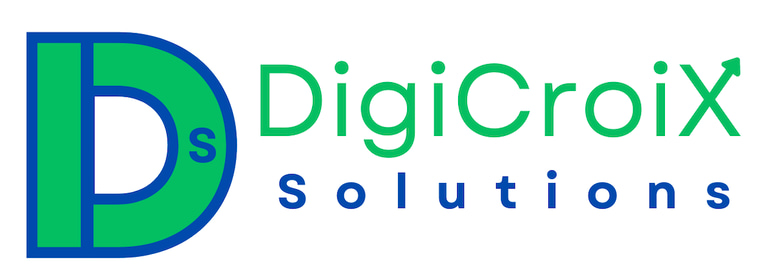Top 4 Reasons Your Digital Ads Are Not Converting (And How to Fix Them)
Running ads but not seeing results? Learn the top 4 reasons your digital ads aren’t converting and how to fix each one. DigiCroiX audits and rebuilds underperforming campaigns into high-ROI machines.
Vishwa Raval
7/6/20255 min read


Reason 1: Poor Targeting
One of the principal reasons digital ads fail to convert is poor audience targeting. When marketers do not adequately define their target audience, campaigns can reach individuals who have no genuine interest in the product or service offered. This misalignment results in low engagement rates, diminishing the possibility of conversions. To capitalize on digital advertising, it is essential to identify the right demographics, interests, and behaviors of potential customers.
Data analytics plays a crucial role in refining target audiences. Market research tools can provide insights into consumer preferences, behavioral patterns, and trending interests relevant to the product or service. By utilizing data analytics, businesses can pinpoint more precise audience segments for their ads, leading to improved relevancy and, consequently, increased conversion rates.
Additionally, audience segmentation allows for the creation of tailored messages that resonate with different groups. Rather than adopting a one-size-fits-all approach, marketers should develop personalized campaigns that cater to specific audience needs and preferences. Techniques such as demographic targeting, geographic targeting, and psychographic targeting can enhance campaign effectiveness. For instance, businesses may choose to focus on age groups, genders, and locations that significantly drive conversions for their industry.
Another effective strategy to improve ad performance is retargeting. This approach enables advertisers to reach users who have previously interacted with their content but did not convert. By reminding these individuals of the product or service, marketers can enhance brand recall and guide potential customers toward making a purchase. Utilizing unique offers or updated messages can further increase the likelihood of conversion during these retargeting campaigns.
In conclusion, efficient targeting is fundamental to optimizing digital ads. By employing thorough audience analysis and employing segmentation and retargeting strategies, businesses can significantly enhance their ad performance and conversion rates. A strategic focus on the intended audience ensures that advertising efforts yield impactful results.
Reason 2: Unattractive Ad Creative
The effectiveness of digital ads largely relies on their creative aspects, encompassing visuals, text, and calls to action (CTAs). When these elements fail to capture the user’s attention or communicate the desired message effectively, it can lead to lower conversion rates. One of the key factors to consider is the visual design of the advertisement. Attractive visuals—whether images, graphics, or videos—are crucial as they first draw the eye of potential customers. A carefully selected color palette, along with harmonious design elements, can evoke the right emotions and create a connection with the target audience. For instance, vibrant colors may work well for brands appealing to a younger demographic, while subdued tones might resonate more with a professional audience.
In addition to visuals, the copy used in the ad must also align with the overall aesthetic while being compelling and clear. The choice of words should evoke a sense of urgency or desire, especially when crafting CTAs. For example, instead of a generic "Buy Now," using a phrase like "Limited Time Offer - Buy Now and Save!" can increase engagement. Moreover, clarity should not be sacrificed for creativity. Potential customers need to immediately understand what is being offered without sifting through convoluted messages.
Furthermore, it is essential to test and refine ad creatives over time. Utilizing A/B testing allows advertisers to experiment with different visuals, layouts, and messaging to determine which combinations yield higher conversion rates. Common pitfalls include overcrowding the ad with too much information or failing to establish a clear brand identity, which can dilute the impact of the advertisement. By focusing on creating appealing, relevant, and succinct ad creative, businesses can significantly improve their conversion rates, transforming casual viewers into loyal customers.
Reason 3: Ineffective Landing Pages
Landing pages serve as the bridge between your advertisements and conversions; thus, their effectiveness is crucial for the success of your digital advertising campaigns. A well-designed landing page can significantly enhance your conversion rates, while an ineffective one can lead to lost opportunities and wasted ad spend. Several elements contribute to the overall effectiveness of landing pages, including loading speed, mobile optimization, content relevance, and user experience.
First and foremost, loading speed is vital. Research shows that users expect a landing page to load within seconds; if it doesn’t, they are likely to leave and look for alternatives. Optimize your landing page by compressing images and minimizing the use of heavy scripts. This will not only improve the loading time but also enhance the overall user experience. A fast-loading landing page can contribute significantly to higher conversion rates.
Mobile optimization should not be overlooked, considering the increasing number of users accessing digital content via smartphones. Your landing page should be responsive, adapting seamlessly to different screen sizes. A mobile-friendly design ensures that users can easily navigate, read content, and complete forms, thereby increasing the likelihood of conversion.
Furthermore, the relevance of the content on your landing page is critical. It should directly align with the message conveyed in your advertisements. Employ a clear and compelling headline that captures attention and maintains consistency between the ad and landing page. Concise and persuasive content will guide users toward the desired action, whether it’s making a purchase or signing up for a newsletter.
Lastly, user experience plays a pivotal role in landing page effectiveness. A clean layout, intuitive navigation, and strategically placed call-to-action buttons can significantly improve user engagement. Implement A/B testing to experiment with different elements, such as button colors, headlines, and layouts. By measuring which variations perform better, you can continuously refine your landing pages to optimize conversion rates.
Reason 4: Lack of Clear Call to Action (CTA)
A strong and clear call to action (CTA) is essential for maximizing the effectiveness of digital ads. A weak or ambiguous CTA can be a significant barrier to conversion, as it leaves potential customers uncertain about the next steps they should take. Without a decisive CTA, users may hesitate, leading to lost opportunities and increased bounce rates. To enhance conversion rates, it is crucial to design CTAs that are not only persuasive but also clear and actionable.
When crafting a CTA, clarity should be the primary focus. Phrases such as "Buy Now," "Sign Up Today," or "Learn More" provide direct instructions, making it easier for users to understand their options. The language used in CTAs must resonate with the target audience, compelling them to take action. Experimenting with various verb choices can yield insights into what appeals most to your viewer base. Additionally, using urgency or exclusivity can motivate users to engage quickly, which can be achieved through phrases like "Limited Time Offer" or "Join the Exclusive Club."
The positioning of a CTA within ads and landing pages is equally critical. Research indicates that CTAs placed above the fold tend to garner more attention and clicks. However, incorporating CTAs at multiple points can also facilitate engagement, particularly if you provide additional context or information leading up to the CTA. Visually distinguishing the CTA using contrasting colors or larger fonts can also enhance its visibility, drawing the user’s eye to it amidst other content.
In leveraging effective CTAs, one can look to examples from well-regarded brands. For instance, an e-commerce site might utilize a button labeled "Shop the Collection" alongside an enticing image of their products, while a service company may use "Get Your Free Quote" nestled in a promotional banner. By refining and strategically positioning your CTAs, you create clearer pathways for potential customers, ultimately enhancing your ad conversions.
Get in Touch
Book your free consultation today and let's create a strategy to elevate your success!


Address
94 Shree Nagar Apartment, Sola Road, Naranpura, Ahmedabad, Gujarat, India 380063
6706 Fulton Avenue, Burnaby, BC, Canada V5E 3H1
Phone
+91 88497 12474
Quick Links
© 2025. All rights reserved.
Useful Links
Engagement
Subscribe
+91 88497 12474
